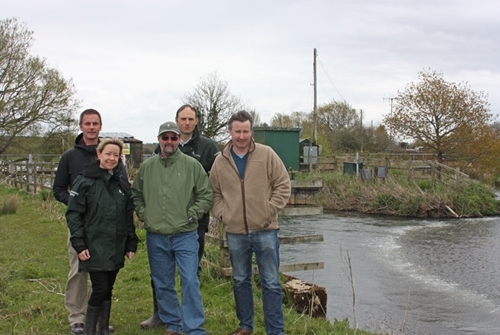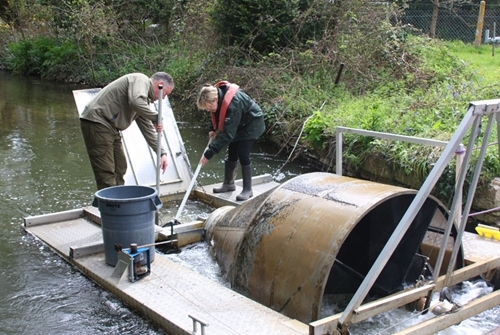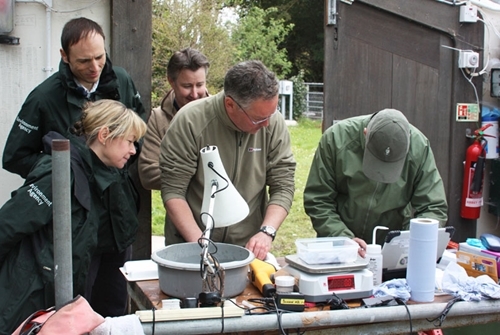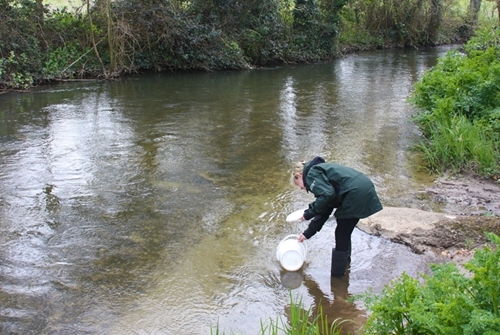Every year, from March until May, we need to count the young salmon, called smolts, that leave the Frome for their seaward journey to their feeding grounds. It’s a vital counterpart to the data from our adult salmon counter, which tracks the fish coming back up the river to spawn, and is even more labour-intensive, requiring a hardy group of staff, students and volunteers to work shifts monitoring the river 24/7 for the entire period.

Last month we welcomed Sarah Chare, Deputy Director of Fisheries, Biodiversity and Geomorphology at the Environment Agency, who came down to the Salmon & Trout Research Centre in Dorset to see the work going on. We’ve been working with the EA on this project since 2008, providing an essential snapshot of salmon stocks in British rivers.
We showed Sarah how we use a device called a Bio-Acoustic Fish Fence (BAFF), which generates a curtain of bubbles that smolts do not like to cross, to divert the fish down the millstream, past our monitoring equipment.

Downstream from this is a rotary screw trap (RST), which uses the river current to turn a large drum, funnelling the fish into a holding box at the end. The holding box is checked every 30 minutes to avoid undue stress on the fish and must be manned by at least two people for safety reasons.

The smolts we capture are weighed, measured and sometimes small fin or scale samples are taken for genetic analysis and aging.

The fish are then released unharmed downstream from the RST, where they can continue their journey down the Frome and out to sea.

If you’re interested in lending a hand, either for this year’s parr tagging towards the end of the summer or for next year’s smolt run, see our fisheries department’s volunteering page.